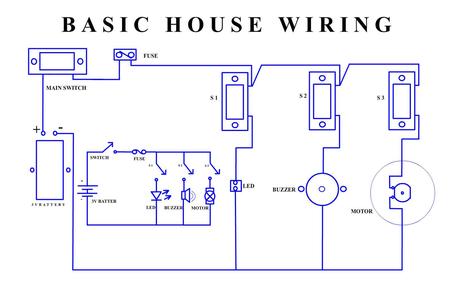

Solar radiation is light – also known as electromagnetic radiation – that is emitted by the sun. Department of Energy Solar Energy Technologies Office is driving innovative research and development in these areas.

In addition, you can dive deeper into solar energy and learn about how the U.S.
PDF BASICS OF ELECTRICITY HOW TO
This energy can be used to generate electricity or be stored in batteries or thermal storage.īelow, you can find resources and information on the basics of solar radiation, photovoltaic and concentrating solar-thermal power technologies, electrical grid systems integration, and the non-hardware aspects ( soft costs) of solar energy. You can also learn more about how to go solar and the solar energy industry. Solar technologies convert sunlight into electrical energy either through photovoltaic (PV) panels or through mirrors that concentrate solar radiation.
PDF BASICS OF ELECTRICITY FULL
It is probably best to look first at the tutorials and then at the blog, if you are hungry for more information.The amount of sunlight that strikes the earth's surface in an hour and a half is enough to handle the entire world's energy consumption for a full year. In some posts he explains questions that readers have emailed to him.

Storr is also writing a Blog that contains some additional topics, some of them a bit more advanced than those that are covered in the tutorials. By the way, the allaboutcircuits forum that is associated with Kuphaldt’s book, is a very good place to ask if you have questions about any topic in the tutorials. But if the pace of the tutorials is too fast for you, try Lessons In Electric Circuits (allaboutcircuits) by Kuphaldt - it will take more time to work through them, but they might be easier for the absolute beginner. If you work through the tutorials you will quickly gain a good basic knowledge of electronics. The AC-Theory tutorial contains a good explanation of the necessary trigonometry, and also of complex numbers (for a more in-depth treatment of this topic, please take a look at the resources on my Complex Numbers page). But even without this you can understand most of the tutorial. For a few pages of the tutorial, the knowledge of a bit of mathematics would be useful, for example in the DC-Theory tutorial the advanced methods of circuit analysis require linear algebra. The tutorials do not assume prior electronics knowledge of the reader. On the homepage the tutorials are listed in alphabetical order, but going through them in that order does not make much sense. The tutorials are independent of each other, but if you are new to electronics you might find it useful to look at them in the order in which I have listed them in the last paragraph. Each tutorial consists of about 5 to 15 consecutive pages which should be read one after another. Digital topics are also covered, ranging from the Binary System, Boolean Algebra, Logic Gates to Combination Logic, Sequential Logic and Counters. Wayne Storr has created a very good set of tutorials, ranging from DC- and AC-Theory over the basic devices Resistor, Capacitor, Inductor and Diode to Transistors and Operational Amplifiers and to circuits like Amplifiers, Oscillators and Waveform Generators and Filters. The tutorials are listed in alphabetical order, but if you are new to electronics, I would recommend to start with DC Theory.


 0 kommentar(er)
0 kommentar(er)
